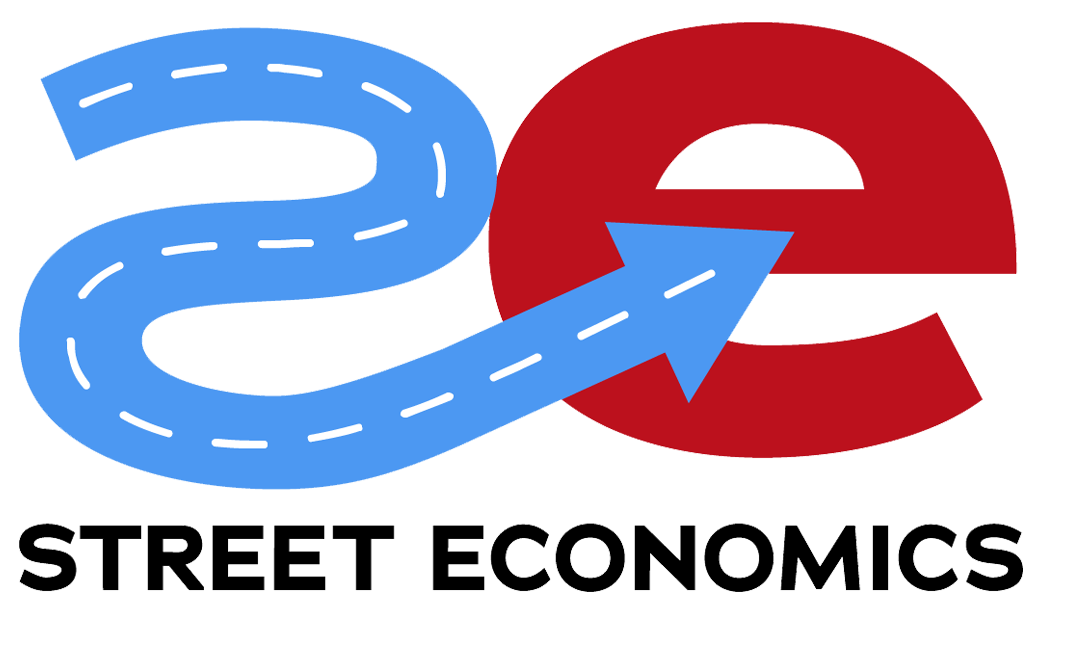BusinessFlare Take
PHILADELPHIA TRANSIT AUTHORITY PROPOSES 45% SERVICE CUTS AND WORKFORCE REDUCTIONS TO ADDRESS $213 MILLION DEFICIT SEPTA just released a budget proposal requiring 45% service cuts, major fare increases, workforce reductions, and a 9 PM curfew for all rail services to address a massive structural deficit, proving that public transit agencies would rather destroy their systems than admit their business models are fundamentally broken. Despite aggressive austerity measures including management pay freezes and consultant cuts that saved $30 million, SEPTA still faces a $213 million budget gap because they’ve spent decades avoiding the hard decisions about labor costs, service efficiency, and fare structures that reflect actual operating expenses. The proposed cuts would essentially dismantle a transit system that took decades to build, all because politicians preferred kicking budget problems down the road rather than addressing structural dysfunction when solutions were still possible. This represents the predictable end result of public sector economics where political considerations consistently override financial reality until collapse becomes inevitable.
Street Economics Insight
MUNICIPAL WORKFORCE CRISIS HITS 300,000 JOBS AS CITIES STRUGGLE TO DELIVER BASIC SERVICES Local government employment declined by more than 300,000 workers between March 2020 and March 2022, threatening municipalities’ ability to perform essential functions while economic developers wonder why their downtown revitalization efforts keep failing. Cities are discovering that you can’t attract businesses to locations where basic municipal services like permitting, inspections, and infrastructure maintenance are delayed because half the staff positions remain unfilled. Some municipalities are using temporary ARPA funds to patch staffing holes, but these bandaid solutions expire soon with no plan for sustaining employment levels when federal money disappears. The real economic development crisis isn’t the lack of tax incentives or flashy attractions – it’s cities that can’t answer phones, process permits, or maintain roads reliably enough to support existing businesses, much less attract new ones. Smart economic developers should be advocating for competitive municipal compensation packages and efficient operations rather than chasing expensive development projects that require functional city government to succeed.
Drama Meter Reading
POWAY CITY COUNCIL FACES TRIPLE THREAT OF RECALLS, LAWSUITS, AND RESIDENCY VIOLATIONS IN MUNICIPAL MELTDOWN Poway’s city council has achieved the rare trifecta of local government dysfunction: simultaneous recall efforts against two council members, a potential lawsuit over residency requirements, and meetings filled with “heated back-and-forth exchanges, digs and bickering” that make productive governance impossible. Council member John Blain faces recall for allegedly threatening and harassing elected officials and staff, while Peter De Hoff gets recalled for abandoning his anti-high-density development campaign promises. Meanwhile, council member Pepin voted on city business after moving out of his district, creating a potential legal challenge that could invalidate municipal decisions. When your city council spends more time fighting each other than addressing community needs, you’ve created an environment where businesses look elsewhere for predictable governance. The economic cost of political drama extends beyond immediate dysfunction to long-term reputation damage that makes investors question whether local leadership can execute basic municipal functions reliably.
Book Drop
MISSOURI APPELLATE COURT UPHOLDS $611 MILLION MONSANTO VERDICT EXPOSING DECADES OF REGULATORY CAPTURE A Missouri court just affirmed a $611 million verdict against Monsanto for knowingly selling carcinogenic Roundup without warnings, revealing internal emails where company scientist Donna Farmer admits “you cannot say that Roundup does not cause cancer.” This case perfectly illustrates the central theme of “Red Tape Empire” – how regulatory agencies become captured by the industries they’re supposed to oversee, creating a system where public safety takes a backseat to corporate profits. Monsanto’s strategy included ghostwriting supposedly independent scientific articles and building networks of scientists to promote glyphosate safety “directly or indirectly behind the scenes,” showing how companies manipulate the regulatory process to avoid accountability. The $170,000 pending cancer claims demonstrate the real-world cost when bureaucratic systems prioritize industry convenience over public protection, creating economic liabilities that ultimately get passed to communities through healthcare costs and environmental cleanup.
ECOSINT Signal
MUNICIPAL FISCAL CRISIS THREATENS NATIONAL ECONOMIC SECURITY AS MAJOR CITIES FACE BUDGET COLLAPSE Chicago faces a $1 billion budget deficit with $35 billion in unfunded pension liabilities while Houston’s court-mandated flood repairs create a $330 million budget gap, signaling a nationwide municipal fiscal crisis that threatens economic stability at the local level. The convergence of declining downtown commercial activity, expiring federal pandemic aid, and massive pension obligations is creating a perfect storm where even large, well-managed cities cannot maintain basic services without dramatic tax increases or service cuts. When major metropolitan areas like Chicago, Houston, and San Francisco face serious financial stress simultaneously, the ripple effects threaten regional economic networks, business confidence, and financial market stability that extends far beyond municipal boundaries. Cities struggling with fiscal collapse become unreliable economic partners, unable to maintain infrastructure, provide adequate public safety, or process basic business services that regional economies depend on for functionality. This represents a national economic security threat that requires federal attention before municipal failures cascade into broader economic disruption affecting commerce, employment, and investment patterns across entire regions.
Red River Flavor
MISSOURI MONSANTO TRIAL EXPOSES HOW COMPANY GHOSTWROTE SAFETY STUDIES WHILE KNOWING GLYPHOSATE CAUSES CANCER Internal Monsanto emails revealed during the Missouri trial show company executives planned to recruit outside scientists to author pro-Roundup studies “ghost-written by Monsanto employees,” with executive William Heydens writing they would keep costs down “by us doing the writing and they would just edit & sign their names.” This represents the worst kind of corporate deception – manufacturing fake scientific credibility while knowing their product causes cancer, then using that fraudulent research to influence public health policy. The company’s own scientist admitted to “reviewing and editing scientific articles about glyphosate without being listed as an author,” a practice she acknowledged was “common at Monsanto.” Meanwhile, the EPA continues to claim glyphosate is safe based partly on these compromised studies, showing how food and chemical companies corrupt the scientific process to avoid regulation. When corporations can buy fake science to cover up health risks, communities bear the real costs through increased cancer rates and healthcare expenses that never show up in the original cost-benefit analysis.
The Music Cities
HOLLYWOOD PRODUCTION FLEES LOS ANGELES AS CITIES COMPETE FOR ENTERTAINMENT INDUSTRY DOLLARS Los Angeles County employment in motion picture and sound recording is down 10% since 2019 while cities like Atlanta, Albuquerque, and New Jersey capture runaway production with better tax incentives and lower costs. California’s share of global film projects fell from 23% in 2021 to just 18% in 2023, proving that entertainment industries will relocate when the economics make sense, regardless of traditional advantages like talent pools and weather. Producer Ben Everard admits LA is “living off Hollywood’s endowment” as the cost difference has become so extreme that other jurisdictions only need to be “good enough” rather than superior to win projects. Cities smart enough to offer competitive incentives, streamlined permitting, and affordable housing for crew members are building sustainable entertainment economies while LA struggles with $700 fees just to use a dog on set. The lesson for economic developers is that even industries with massive network effects and historical advantages will abandon expensive locations when alternatives offer significantly better value propositions.
Space Economy Signal
SPACEX STARSHIP EXPLOSION HIGHLIGHTS TECHNICAL RISKS IN COMMERCIAL SPACE ECONOMY EXPANSION SpaceX’s Starship exploded during a routine test in Texas, marking the latest setback for Elon Musk’s Mars ambitions and highlighting the technical risks cities need to understand before betting public resources on space economy development. The explosion occurred during a static fire test following three failed test flights this year, demonstrating that even well-funded space companies face significant technical challenges that can delay projects or eliminate planned facilities entirely. SpaceX is already behind schedule on delivering a moon mission version for NASA’s 2027 timeline while racing to prepare for Mars missions when the planet aligns favorably next year. Cities positioning themselves for space economy participation should focus on diversified aerospace manufacturing and support services rather than depending on single companies or revolutionary technologies that might not materialize on promised schedules. The smart approach involves building general aerospace capacity that can support multiple space companies rather than betting everything on one firm’s specific technology roadmap that could literally explode during routine testing.
Purple Cow of the Day
TRAFFIC JAM TOURISM DISCOVERS SMALL-TOWN ECONOMIC OPPORTUNITIES HIDING IN PLAIN SIGHT Frustrated highway drivers escaping traffic jams are accidentally discovering small-town economic gems like the British bakery in Larkspur, Colorado, the cheese shop in Sergeantsville, New Jersey, and fruit stands selling “mouthwatering corn” outside Stockton that would never appear on tourism marketing materials. This represents authentic rural economic development that leverages geographic position and serendipity rather than expensive visitor centers or coordinated marketing campaigns that most small towns can’t afford. Towns along alternate routes to major highways are capturing unexpected economic activity from urban travelers who stumble upon local businesses while avoiding congestion, creating win-win scenarios that don’t require taxpayer investment in tourism infrastructure. Smart rural communities should be mapping traffic patterns and ensuring their main streets offer compelling reasons for detour-driven visitors to stop, spend money, and remember the experience positively enough to return intentionally. This model proves that sometimes the best economic development strategy is simply being visible, accessible, and memorable when opportunity literally drives past your door.
About Street Economics Daily
Street Economics Daily cuts through noise, jargon, and bureaucracy to deliver sharp, actionable insights for civic and economic development professionals. Blunt, irreverent, and grounded firmly in reality, it’s essential daily reading for city leaders who refuse to settle for outdated strategies. Visit us at streeteconomics.ai



No responses yet